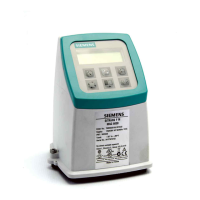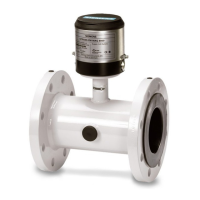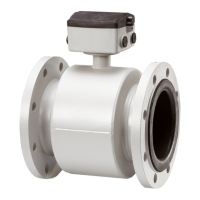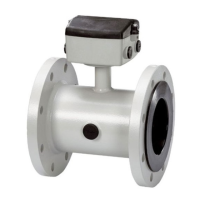Safety notes
2.3 Installation in hazardous area
MAG 6000 I / MAG 6000 I Ex de transmitter
16 Operating Instructions, 04/2016, A5E02083319-AG
Special conditions for ATEX 2 GD
It is required that:
● the equipment is supplied with its current output (terminals 31 and 32) in "Passive mode
only.
● the external connections to terminals 85 and 86 shall comply with the following:
– The wire conductors shall have a cross-sectional area between 0.5 mm
2
and 2.5 mm
2
.
– No more than one single or multiple strand wire conductor shall normally be
connected to each of the terminals. If multiple conductors are required, these shall be
joined in a suitable manner, e.g. two conductors into a single insulated crimped boot
lace ferrule.
– The insulation on the wire conductors shall extend to within 1 mm of the metal of the
terminal throat.
– The terminal screws shall be tightened down with a torque between 0.4 Nm and 0.45 Nm.
– The equipment shall not be opened when an explosive gas or dust atmosphere may
be present.
– The equipment internal circuits at the following terminals are not capable of
withstanding a 500 V r.m.s. a.c. test to earth as required by clause 6.3.12 of
EN 60079-11-2007. This must be taken into account in any equipment installation:
Terminals 77 and 78 – Digital input.
Terminals 95 and 96 – Foundation Fieldbus/Profibus (FISCO). (Not applicable to
Model 7ME693-2BA6)
Terminals 0, 81, 82, 83 and 84 – Sensor electrode input (Remote Version only).
● electrical connections are in accordance with national requirements for installation of
electrical systems in hazardous areas, e.g. EN60079-14 in Europe.
● the protective cover for the power terminals is properly installed.
When the device is de-energized, the power supply terminal room may be opened
because the non-intrinsically safe power terminals are separately covered. Only remove
protective cover when device is de-energized.
● sensor and transmitter are connected to the potential equalizing conductor.
● when protective earth (PE) is connected, no potential difference between the protective
earth (PE) and the potential equalization (PA) can exist, even during a fault condition.
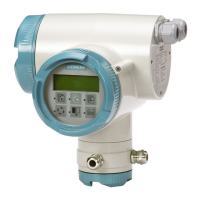
